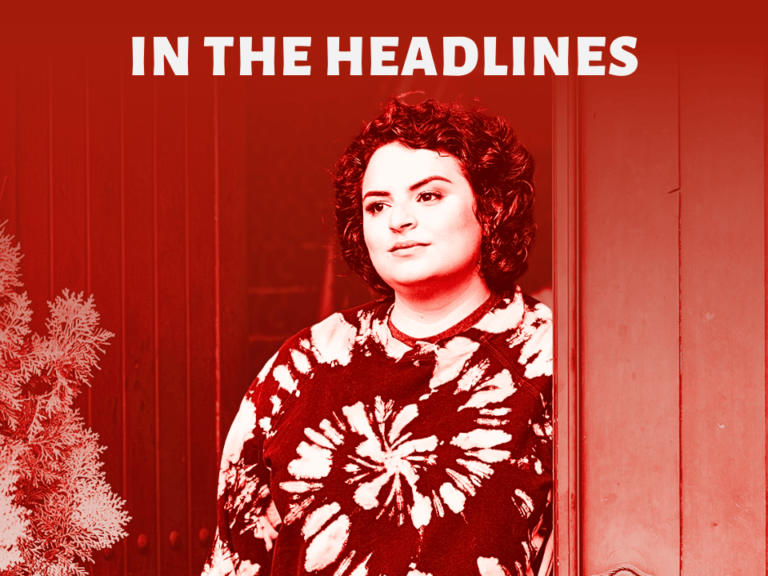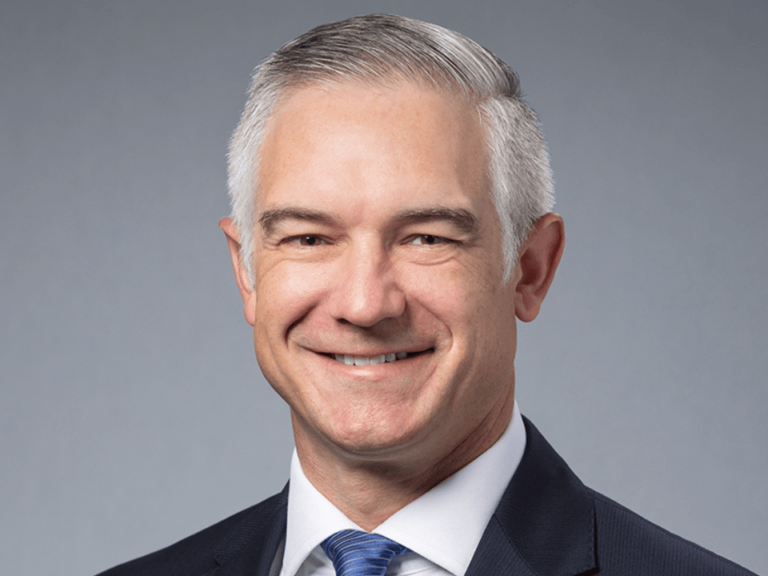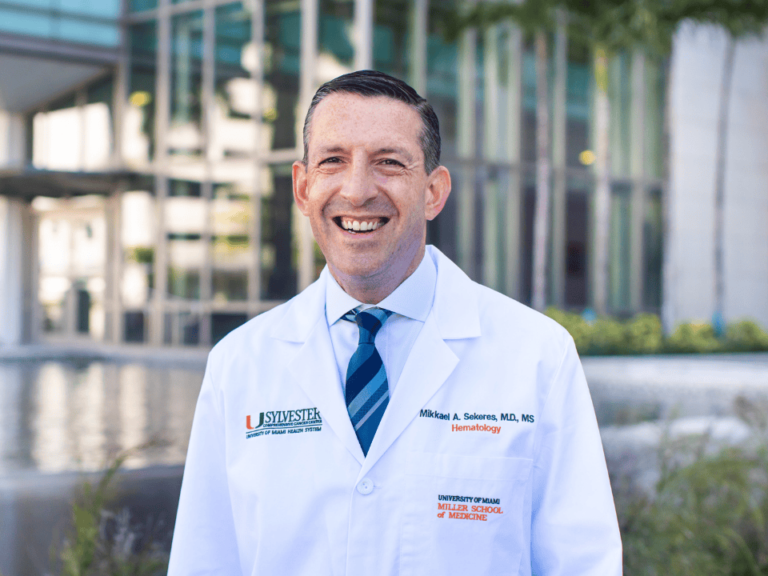Data from large epidemiologic studies demonstrate that abortions and miscarriages don’t increase women’s risk of developing breast cancer, an NCI-sponsored workshop concluded.
Last week, the Institute brought together about 100 experts to consider published studies as well as new, unpublished results probing the potential impact of pregnancy and its termination on breast cancer risk.
The absence of a link between abortion and breast cancer was so apparent that no debate about the issue was heard at the three-day conference. Instead, participants of the workshop Feb. 24-26 focused on studies of hormones present during pregnancy in humans and rodents.
The conference concluded that women who have their first child while still in their teens or early 20s have a lower lifetime risk of breast cancer, but for some years after pregnancy at any age, women are at a higher risk of the disease, said Leslie Bernstein, professor and senior associate dean at the University of Southern California Keck School of Medicine.
Some workshop participants suggested that it may be possible to help protect women from breast cancer by developing an intervention that mimics pregnancy, but far more research would be needed.
Bernstein presented the workshop conclusions at a March 3 meeting of the NCI Boards of Scientific Advisors and Scientific Counselors. The boards voted unanimously to accept the report.
The workshop findings are consistent with the NCI’s “Abortion and Breast Cancer” fact sheet, which NCI Director Andrew von Eschenbach approved and then had removed from the Institute’s Web site last year under pressure from members of Congress and antiabortion activists (The Cancer Letter, July 12, 2002).
Explaining his action to the advisory boards, von Eschenbach said that after receiving letters about the Web page, he started to worry about “potential conflicts and inconsistencies” in the available data. He decided to call the workshop to conduct a “stateof-the-science review,” he said.
The Institute posted the workshop report on its Web site and said a new fact sheet is being written. The workshop report is available at http://www.cancer.gov/cancerinfo/ere-workshop-report.
Updated Studies: Still No Association
The current round of debate about the effect of abortion on breast cancer risk can be traced to a study by University of Washington epidemiologist Janet Daling, which found an increase in breast cancer risk among women who had had abortions. The study was published in the Journal of the National Cancer Institute (1994;86:1584).
Antiabortion groups acted aggressively on these findings.
Citing the Daling study and data from earlier studies, they lobbied states to change their informed-consent laws to include statements about the risk of breast cancer in the information that must be given to women considering abortion. Two states, Montana and Mississippi, passed laws requiring such changes in consent forms.
Antiabortion groups also paid for billboards in public transit systems of several cities, making proclamations about the alleged link between abortion and breast cancer.
Also responding to the Daling study, NCI developed a fact sheet stating that the data on abortion and breast cancer were inconsistent.
Then, a 1997 study by Mads Melbye, professor and head of epidemiology research at Statens Serum Institute in Copenhagen, laid the issue to rest, at least for most epidemiologists.
The Melbye study, using Danish health registries that included 1.5 million women and more than 10,000 cases of breast cancer, found no overall association between abortion and breast cancer. Since the study was so large and used medical records rather than women’s self-reports, it was considered definitive.
Responding to Melbye’s findings and three other studies, NCI epidemiologists early last year updated the Institute’s fact sheet to state that “it appears that there is no overall association between spontaneous or induced abortion and breast cancer risk.”
This was the Institute’s strongest statement to date on the issue.
Von Eschenbach approved the fact sheet last March. However, after HHS Secretary Tommy Thompson received a letter last June from Rep. Chris Smith (R-NJ) and 27 other members of Congress objecting to the fact sheet, von Eschenbach ordered the Web page taken down.
Von Eschenbach said to the advisory boards that “inconsistencies” in the Melbye study made him question the fact sheet’s accuracy.
While the study found no overall statistically significant association between abortion and breast cancer, the study suggested that the risk of breast cancer increased with each week of gestation prior to abortion. Women whose abortion took place in the 18th week of pregnancy or later had an 85 percent increased risk of breast cancer.
“I recognized how important it was that we be absolutely precise and have absolutely the best scientific information,” von Eschenbach said.
At the NCI workshop, Bernstein said that most of the studies that predated Melbye were not matched case-control studies, which means the results could have been confounded by many risk factors associated with breast cancer. Also, the results could have been biased by women’s reluctance to reveal that they had had abortions.
Bernstein presented data from three other recent, large studies—the California Teachers Study, the Women’s CARE Study, and a study of women under age 40—all of which found no association between breast cancer and abortion, no matter how long the duration of pregnancy. The study of women under the age of 40 is being published this month in the journal Cancer Epidemiology, Biomarkers and Prevention.
The workshop took the unusual step of closing a portion of the proceedings to the press so that scientists could consider the latest updates of studies. Reporters were allowed to listen to the findings if they signed statements promising not to publish the results.
“In the closed session, additional data were presented on duration of pregnancy at the time an induced abortion occurred,” Bernstein said to the advisory boards. “In all of the new data that was presented, there was no impact at all on breast cancer risk associated with the duration of the pregnancy at the time that the abortion occurred. Some of the studies were based on recall, but there was also information presented in the closed session where it was determined from medical records, that, in fact, there was no effect.”
Bernstein said new studies of the hormone hCG, which is present early in pregnancy, peaking at about eight weeks, provided some confirmation of an interesting epidemiologic finding in one of her first breast cancer studies. Bernstein found that women in Los Angeles who took part in a popular weight-loss regimen in the 1950s and 1960s, consisting of 42 shots of hCG, had a statistically significant decrease in the risk of breast cancer, unless they were morbidly obese.
“As a weight-loss regimen, it didn’t work,” she said. “But it did provide some protection from breast cancer. That is why I’ve always felt that, biologically, you wouldn’t expect that a pregnancy that is progressing normally would increase a woman’s risk of breast cancer” no matter how the pregnancy terminates.
At the workshop, antiabortion activist Joel Brind, an endocrinologist at Baruch College of the City University of New York, sought to defend the early studies that Bernstein said lacked clear reference groups. However, each time he spoke, other participants of the workshop rejected his analysis. Brind’s views on abortion and breast cancer were featured prominently in Rep. Smith’s letter to HHS Secretary Thompson.
Six years ago, Brind testified as an expert witness for Christ’s Bride Ministries, the organization that used billboards to claim that abortion increased breast cancer risk, in a suit against the Southeastern Pennsylvania Transportation Authority, which had pulled the ads after community protests. The Ministries won on free-speech grounds.
Breast cancer activists have questioned the NCI rationale for calling the workshop. Even if abortion did increase breast cancer risk, the effect was likely to be very small, compared to other risk factors, critics said.
“There doesn’t seem to be a compelling scientific reason for NCI to do this at this time,” said Jan Platner, of the National Breast Cancer Coalition. “There are many other issues that need to be dealt with. It does not seem to be a good use of resources.”
A feminist group said it viewed NCI’s actions as an attempt by the Bush Administration to impose a conservative ideology on science.
“The scientific, medical, and women’s rights communities must continue to draw attention to the Bush Administration’s stealth mission to undermine the integrity of the scientific process by conservatively stacking various scientific panels and committees as a political payback to religious fundamentalists,” said Beth Jordan, medical director of the Feminist Majority Foundation.
Early Pregnancy Associated With Lower Risk
The workshop ranked the following epidemiologic findings as having a “strength of evidence rating” of 1, meaning the findings are well established from human studies:
- Early age at first term birth is related to lifetime decrease in breast cancer risk.
- Increasing parity is associated with a long-term risk reduction, even when controlling for age at first birth.
- The additional long-term protective effect of young age at subsequent term pregnancies is not as strong as for the first term pregnancy.
- A nulliparous woman has approximately the same risk as a woman with a first term birth around age 30.
- Breast cancer risk is transiently increased after a term pregnancy.
- Induced abortion is not associated with an increase in breast cancer risk.
- Recognized spontaneous abortion is not associated with an increase in breast cancer risk.
- Long duration of lactation provides a small additional reduction in breast cancer risk after consideration of age at and number of term pregnancies.
Listed as a 2, where the weight of the evidence favors the statement:
- Pregnancy-induced hypertension is associated with decreased breast cancer risk.
Listed as a 3, suggested from human studies, but speculative:
- Maternal DEC exposure is associated with an increase in breast cancer risk.
Research Gaps
The workshop identified the following gaps in epidemiology research:
- By what mechanism does pregnancy at an early age protect against breast cancer?
- Do pregnancy and age at pregnancy modify radiation-inducted breast cancer risk?
- What are the effects of age at pregnancy on subgroups of women (e.g., those with BRCA-1 and 2 mutations)?
- What is the mechanism by which lactation affects breast cancer risk?
- What is the temporal pattern of breast cancer risk following lactation?
- What is the effect of lactation on women with BRCA-1 and 2 mutations?
- Does gender of offspring have an effect?
- Does birth weight of offspring have an effect?
- What is the impact of multiple births in the same pregnancy with and without assisted reproductive technology?
- What are the breast cancer risk implications of abnormal pregnancies (e.g., spina bifida, late fetal death, fertility treatment-induced pregnancy, preterm delivery, small for gestational age offspring)?
- What is the mechanism by which preeclampsia reduces breast cancer risk?
- Is there a distinction between hypertension and pre-eclampsia with respect to breast cancer risk?
- Is gestational diabetes associated with breast cancer risk?
Clinical findings and their ratings were:
- There are long-lasting decreases in mammographic density following pregnancy (2).
- There may be changes in breast histology that can be correlated with risk in premenopausal women (3).
- Prolactin, estradiol, and IGF-1 are decreased after pregnancy (3).
Animal model findings and their ratings were:
- Pregnancy protects against subsequent chemical carcinogen-induced breast cancer in rats and mice (1).
- Estrogen and progesterone combinations and hCG protect against carcinogen-induced cancer in rodents by mimicking pregnancy (1).
- Short-term estrogen exposure, at levels of estrogen mimicking pregnancy, is protective for carcinogen-induced cancer in rats (1).
Future research directions:
- Develop additional animal and treatment models, including further examination of existing models.
- Examine the molecular mechanisms of hormone-induced protection, including epithelial/ stromal interactions.
- Integrate the methodology of genomics and proteomics into the study of pregnancy in relation to risk of breast cancer.
- Pursue descriptive studies about human breast development in order to formulate new hypotheses.
- Pursue international studies to develop hypotheses for observed international differences in breast cancer risk.
- Develop surrogate markers to identify risk of breast cancer following pregnancy.
- Translate knowledge about protective effects of pregnancy into intervention trials with human populations.
- Promote interaction between epidemiologists, clinicians, and basic scientists.
- Consider a funding mechanism aimed at interdisciplinary research concerning pregnancy and breast cancer.
- Develop high-throughput technology for hormone measurement.
- Support the collecting, archiving, and sharing of relevant biospecimens.











